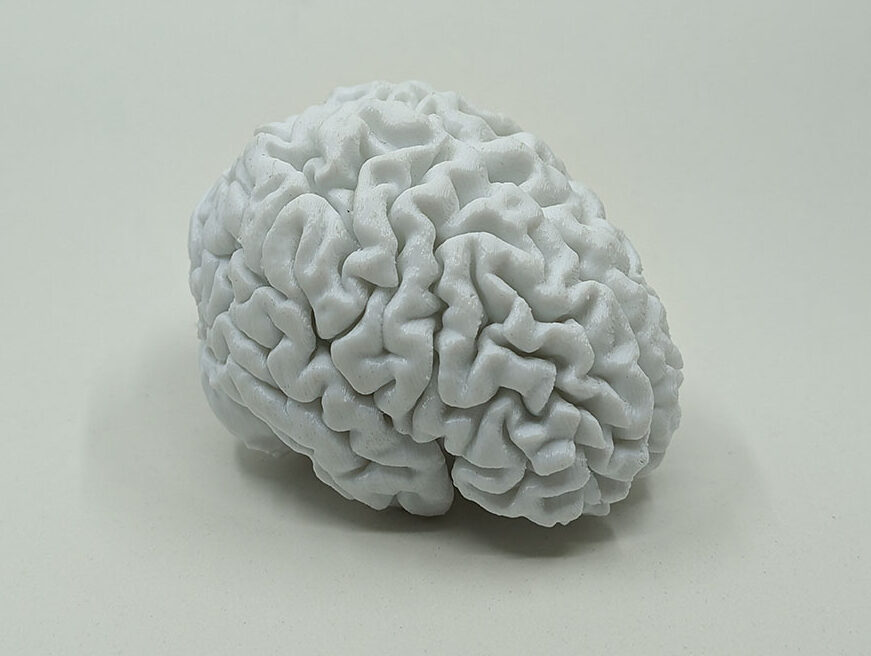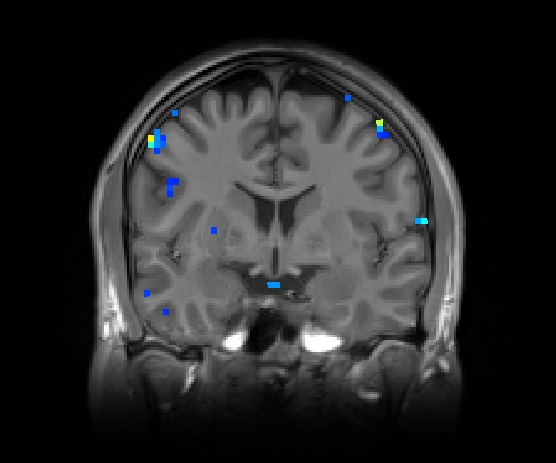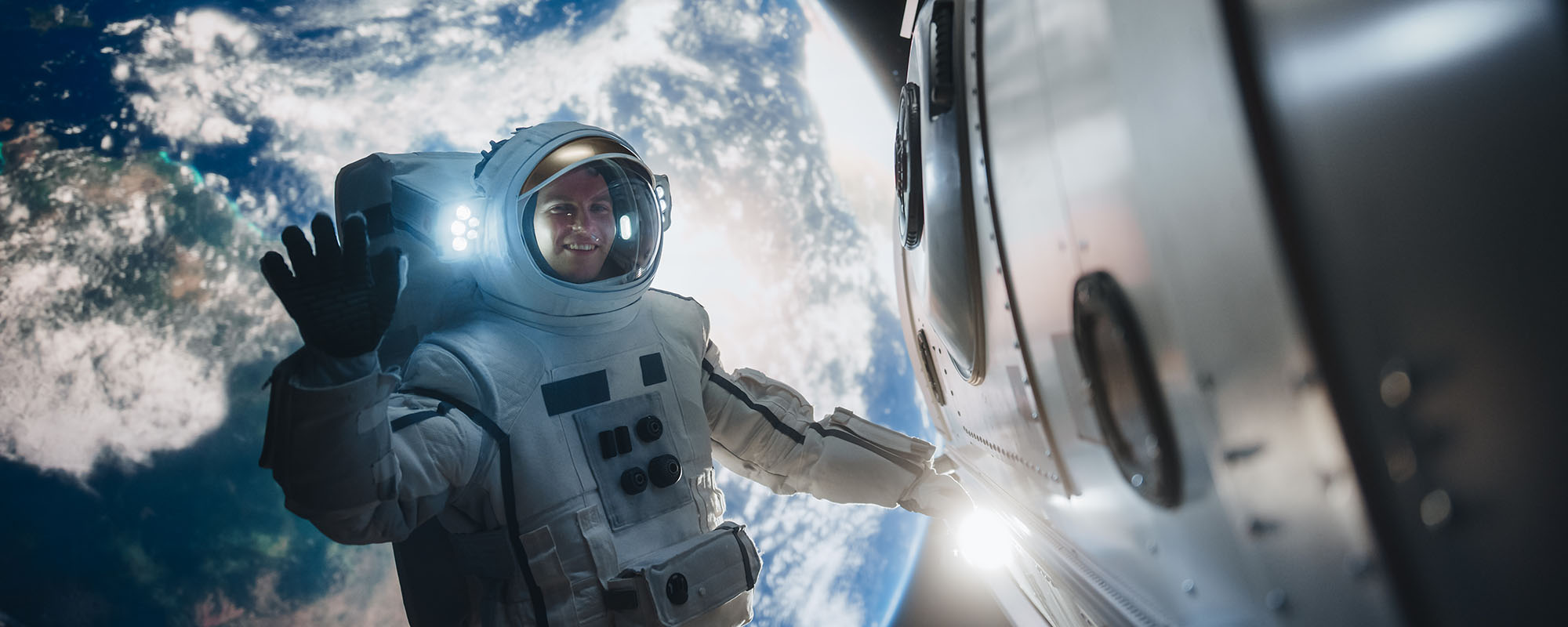The University of Malta’s Boundaries of the Brain laboratory is developing a toolbox that can help study spaceflight’s impact on the brain. Jonathan Firbank speaks with the project’s head, Dr Claude Bajada, about how they are navigating the incredible challenges this presents.
Travelling to space is possibly the greatest challenge we have overcome. The stars were once a means of navigation, not something to navigate to. Before that, we occasionally sacrificed each other to them. When our early hominin ancestors looked to the sky, it was because giant birds may have snatched them from the ground and eaten them – a rapid ascent wasn’t high on their list of priorities. Our minds’ ambition evolved from “not lining a comically large bird’s nest” to “spaceflight”. Our physical brains, however, are struggling to keep up. We’ve evolved according to the demands of a very specific atmosphere and an even more consistent gravity. Changes to either impact our brains’ health, in ways that are still not fully understood.

3D printed brain image courtesy of Dr Claude Bajada
Dr Claude Bajada, a University of Malta neuroscientist, heads the Boundaries of the Brain laboratory (BOB lab). He is working on Operation TOM with a team that includes Dr Kenneth Scerri, Dr Liam Butler, and Nina Attard Montalto, with invaluable contributions from students Aitor Alberdi Escudero, Kristian Galea, and other members of the BOB lab. Operation TOM aims to enhance and refine the Vogt-Bailey (VB) Toolbox, an open-source, digital library of data and resources. These tools are for future investigations of spaceflight’s impacts on the brain. And there are many. While oxygen can be taken with us, our atmosphere also protects us from cosmic radiation. Without it, as Bajada states, ‘background radiation is higher, which is a significant issue’. Then there’s gravity. Weightlessness sounds liberating, but ‘in microgravity, our muscles experience much less resistance,’ atrophying them as it decalcifies bone. ‘Anything affecting the body also impacts the brain. It uses a huge amount of our metabolism.’ Just like our muscles and skeleton, it evolved to function in Earth’s gravity. If you take away the gravitational downforce we’re accustomed to, fluid builds up in the brain. Cerebrospinal fluid swells ventricles inside the brain, and this cranial pressure may lead to ‘a condition that can cause blindness, Spaceflight Associated Neuro-ocular Syndrome (SANS)’.
The Data from Space
Contrasting with the numerous health problems astronauts face, is the minimal amount of available data. Operation TOM plans to work with MRI scans from about ten individuals, taken before and after spaceflight. Bajada remarks, ‘We will then run brain image analysis techniques that we’ve developed in-house, a data-driven approach.’ Much like spaceflight itself, ‘our research is a little bit exploratory. A lot of the data is opportunistic – you can only study space-related conditions on people who’ve been to space, and there’s not many of them. Because of the limited amount of data and because of our relative inexperience with these types of data, we don’t have the luxury to answer extremely specific questions.’ For example, when a person is being exposed to a multitude of potentially harmful factors including (but not limited to) radiation and microgravity, ‘it’s incredibly hard to disentangle which specific factors are causal’ instead, it’s more feasible to draw broader conclusions about the health impact of spaceflight as a whole.

Courtesy of Dr Claude Bajada
As such, data is taken as it comes. ‘In terms of evidence, most of the data you’re going to get is from observational study’, Bajada notes. Observational studies do not have the tightly controlled variables of experimental studies; instead, being a more naturalistic form of research, they record an ongoing process. ‘In terms of evidence, these studies are not incredibly powerful’, but for a frontier such as this, ‘it’s about as good as we can get, given what we can work with. An interesting result would even be a methodological result.’ For example, simply discovering that spaceflight creates negligible peculiarities in the brain that complicate before-and-after comparisons is a useful result. ‘We could then start to find a way to solve that problem’, incorporating any lessons learned into the VB toolbox.
Not every discovery is this subtle. ‘Astronauts show obvious changes to the visual cortex, which may give us an inkling as to the neurobiological structure underpinning SANS, a condition which only appears in space.’ It’s understood that SANS is a consequence of structural changes inside the brain, causing ‘visual alteration, cognitive change and general issues with health.’ But, the same microgravity that creates such an overt health condition may interfere with the diagnosis of others. ‘Apparently, the brain’s structure changes a little due to the gravitation difference; things get smooshed up a little in certain places. That’s going to be a technical issue.’ Observing specific changes is easier if the before-and-after images are largely the same – if they “register” to each other. ‘That’s usually fairly easy in the same individual, as it’s the same brain! It might change over a lifetime, but over a few months it will look largely the same. But, if you have conformational changes due to microgravity you may have problems with limited registration. That’s going to be an interesting challenge.’
Scanning Astronauts
Another challenge lies in the nature of an MRI. An MRI scan ‘takes advantage of something called neurovascular coupling.’ As Bajada explains, ‘when you tap your finger, part of your brain must work so that you can tap your finger. The MRI does not pick up the synaptic activity, but that part of the brain needs oxygen to work. The MRI monitors the rush of oxygenated blood to the area’ by tracking the blood’s magnetic properties. This technology is a great medical achievement, but it only provides circumstantial evidence for a specific synaptic event until the data is ‘cleaned’, as Bajada puts it. ‘First of all, we have to account for head movement. Even the most perfect study participant can’t keep their head utterly motionless for the twenty-minute duration of the scan. You have to estimate and correct for head motion and other distortions. All of this can introduce artificial correlations’. The problem is that an estimation can introduce information that is then misinterpreted as hard data. Since its genesis, a primary goal of Operation TOM has been to make sure this doesn’t happen, with the team successfully “cleaning” terrestrial MRI scans. ‘There’s still a long way to go, but so far it’s looking good!’ Bajada remarks.
Engineering, biotech and biomedical questions emerge and are answered. Some answers may just be solutions to interesting questions, which is more than worthwhile, but others have incredible uses beyond that.
Dr Claude Bajada
This investigation has a recurring theme: The conditions beyond the sky challenge our physical wellbeing. Collecting data on that problem is challenging. Processing that data is challenging. Interpreting the processed data is challenging and then, after all that, solving the problem is the most challenging of all. And, this daunting process is only the beginning; the BOB lab is inventing not the solution but the tools needed to find that solution. But keeping our eyes skyward is what has always set us apart. For Bajada, ‘the most important thing about spaceflight is the lingering beacon of hope it represents. We’re a curious species that wants to discover, and spaceflight is beautiful just because of that. The motivation for exploring space is principally curiosity, not pragmatism. We are fascinated with it even as children, before we get bogged down with the gruesome realities of life – the wonder for the unknown is part of what drives us.’ And this cerebral wonder reaps practical rewards. ‘Engineering, biotech and biomedical questions emerge and are answered. Some answers may just be solutions to interesting questions, which is more than worthwhile, but others have incredible uses beyond that.’ Spaceflight has already contributed a multitude of technologies in computing, communications, navigation and engineering that are now crucial to our way of life. What spaceflight will contribute to understanding our brains is a discovery worth making.
Project Operation TOM is financed by the Malta Council for Science & Technology, for and on behalf of the Foundation for Science and Technology, through the FUSION: Space Upstream Programme.





Comments are closed for this article!